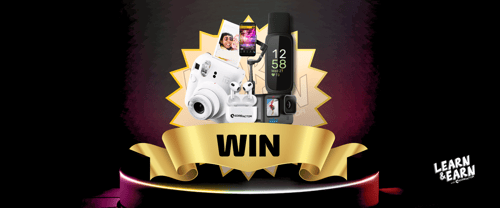Inspiring the next generation of innovators means introducing them to career paths that merge passion and purpose. Kurtis Bolduc, an Electrical Design Engineer at MacLean Engineering, demonstrates how students can transform their love for technology and the outdoors into a meaningful career. Kurtis’s career journey, rooted in his Indigenous heritage and commitment to a greener future, offers a compelling example of how students can thrive in fields like electrical design.
From Serpent River to Sustainable Engineering
The Edge Factor team had the incredible opportunity to capture Kurtis’s story in the episode Trail Blazer, featured in our Launch Point series. This episode is now part of the Wired for Success badge, included in this month’s Learn & Earn Campaign. Students can watch Trail Blazer for free, participate in the online activity, earn a digital badge, and be entered to win a prize. It’s an engaging way for students to explore careers and gain valuable insights as they learn and earn their way to a great career.
Kurtis’s journey began with a deep connection to nature. His family is from Serpent River First Nations, and he spent much of his childhood on the Mississaugi First Nations Reserve, outside of Blind River, Ontario. Growing up surrounded by the wilderness, Kurtis enjoyed outdoor activities like fishing, hunting, and tobogganing, fostering a love for the environment that would later inspire his career.
Combining this passion for the outdoors with his technological creativity, Kurtis decided to pursue a career where he could contribute to a greener future. Today, as an Electrical Design Engineer, he works on projects that are helping industries like mining reduce their environmental impact by introducing electric vehicles.
A Path of Persistence and Innovation
Kurtis’s path wasn’t without challenges, which mainly dealt with overcoming his own insecurities about his ability to solve problems. After completing a Bachelor of Science in Physics, he went on to earn a Bachelor of Engineering in Mechatronics, a journey that took six years in total. His perseverance paid off, as he emerged with the skills needed to enter a growing and innovative field.
“I would say my greatest success was finishing both degrees. I am extremely happy to have completed, graduated, and then ended up in a great career,” Kurtis reflects. His parents’ encouragement and his own motto which he would repeat to himself—"There is no problem I can't solve"—helped him push through even the toughest challenges.
Kurtis now specializes in PLC programming, where he develops and tests programming code for electric vehicles. Whether testing it on machines or conducting internal simulations, he enjoys the problem-solving and hands-on nature of his work.
Becoming an Electrical Design Engineer
The path to becoming an Electrical Design Engineer typically involves studying Electrical Engineering or Electrical Design in college or university. For those interested in the software side, like Kurtis, an interest in computer science is essential. Kurtis emphasizes how rewarding it is to see the results of his work: “It's really cool to see something I have worked on being installed on machines in South Africa, South America, and the Northwest Territories."
For students interested in pursuing a career in Electrical Design, Kurtis offers this advice: “I would say if you have an interest in Science, Tech, Engineering, Art, and Math, then pursue all the challenging classes—chemistry, physics, and calculus.” His own love of working on electric vehicles is grounded in his desire to create sustainable solutions for future generations. He believes it's crucial to develop technologies that allow us to continue enjoying outdoor activities like fishing and hunting without causing harm to the planet.
As mines get deeper, it’s harder to push air into the mines and clean out the particulates from diesel exhaust. Electric vehicles are the solution to this problem, and Electrical Design Engineers like Kurtis are at the forefront of this innovation.
Take Action: Inspire Career Exploration Today
Kurtis’s story demonstrates how combining passion with technical skills can lead to a fulfilling career in STEAM. This month, students can explore this exciting career path by participating in Edge Factor’s Learn & Earn Campaign. By earning the Wired for Success badge, they’ll gain valuable insights into the skills needed for careers like Electrical Design, while also having the chance to win a prize!

Students will make connections between what they are learning in class, and how it applies to skills used on the job. They’ll be able to explore how STEAM and Soft Skills like Dependability and Listening come alive on the job. It's a gamified, engaging way for students to take their first step toward a rewarding career. Access and share this month's Learn & Earn campaigns today!
.png)



/HVAC%20Badge_Doddys%20Story_Blog%20Images.png)
.png)
.jpg)
.png)
.png)
.jpg)